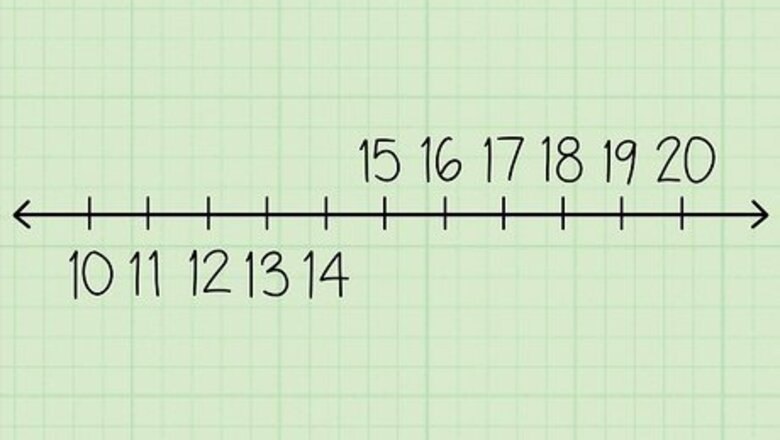
views
Rounding to the Nearest Tenth
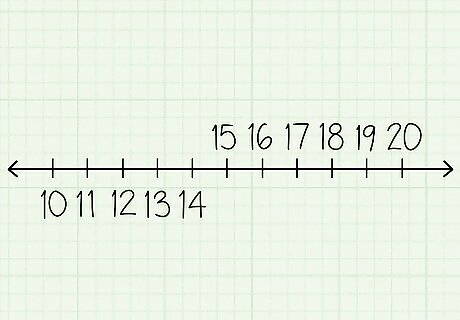
Review rounding on a number line (optional). Let's ignore the decimals for a moment and try rounding to tens instead. Draw a number line from 10 to 20. The numbers on the left half of the line (like 13 or 11) are closer to 10, so they round to 10. The numbers on the right half (like 16 or 17) are closer to 20, so they round to 20. Rounding with decimals can seem confusing, but it's really the same process. You could relabel your number line as "0.10, 0.11, 0.12, ..., 0.19, 0.2" and you'd have a number line for rounding to the nearest tenth.
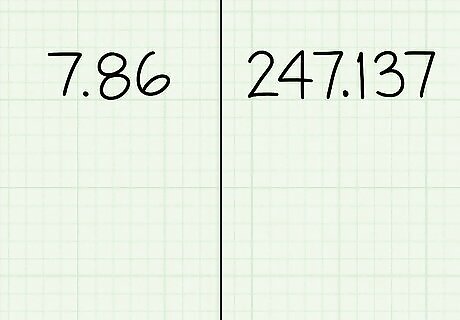
Write down a number with a decimal point. It doesn't matter how many digits come after the decimal. Example 1: Round 7.86 to the nearest tenth. Example 2: Round 247.137 to the nearest tenth.
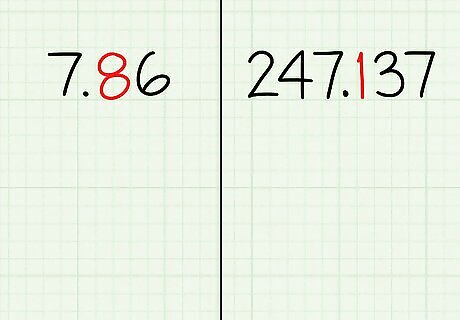
Find the tenths place. The tenths place is immediately to the right of the decimal point. After rounding to the nearest tenth, this will be the final digit in your number. For now, just underline this digit. Example 1: In the number 7.86, the 8 is in the tenths place. Example 2: In the number 247.137, the 1 is in the tenths place.
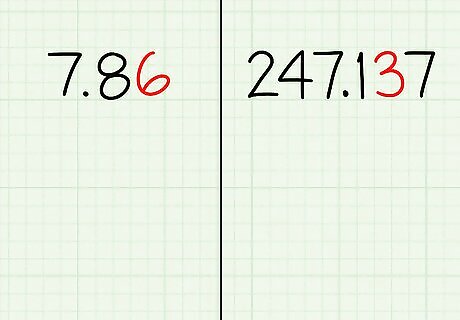
Look at the hundredths place. The hundredths place is the digit to the right of the decimal point. This digit tells you whether to round up or down. Example 1: In the number 7.86, the 6 is in the hundredths place. Example 2: In the number 247.137, the 3 is in the hundredths place. The digits to the right of the hundredths do not matter when you're rounding to the nearest tenth. They represent "extra stuff" too small to make a difference.
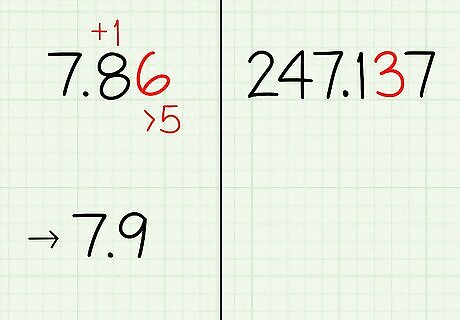
Round the tenths place up if the hundredths place is 5 or more. Is the digit in the hundredths place is 5, 6, 7, 8, or 9? If it is, "round up" by adding 1 to the tenths place digit. Get rid of all digits after the tenths place, and you have your answer. Example 1: The number 7.86 has a 6 in the hundredths place. Round up by adding 1 to the tenths place to get 7.9, removing the digits to the right.
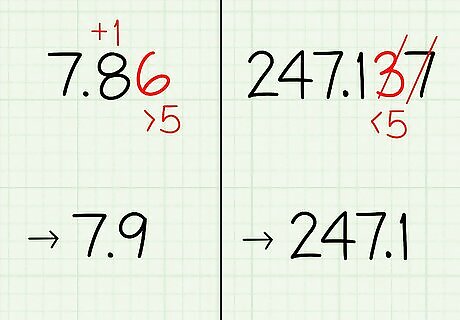
Round down if the hundredths place is 4 or less. Is the digit in the hundredths place 4, 3, 2, 1, or 0? If it is, "round down" by leaving the tenth place as it is. Just remove any digits in the hundredths place and further to the right. Example 2: The number 247.137 has a 3 in the hundredths place. Round down by removing everything past the tenths place, to get 247.1.
Special Cases
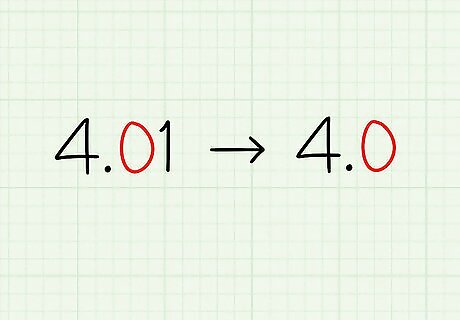
Round down to a zero in the tenths place. If there's a zero in the tenths place and your round down, keep the zero in your answer. For example, 4.03 rounded to the nearest tenth is 4.0. This gives people a better idea of the accuracy of your number. Just writing "4" isn't wrong, but it hides the fact that you were working with decimals.
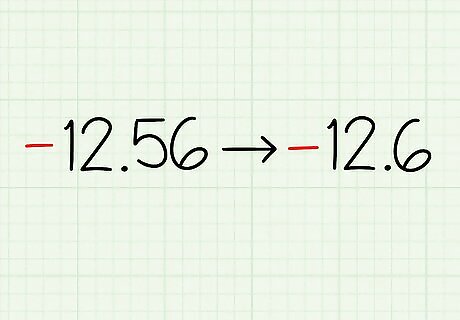
Round negative numbers. Rounding negative numbers is basically the same as rounding positive numbers. Follow the same process and always keep the minus sign in your answer. For example, -12.56 round to -12.6, and -400.333 rounds to -400.3. Be careful about using the phrases "round down" and "round up." If you look at a number line for negative numbers, you'll see that rounding -12.56 to -12.6 moves left, so that's "rounding down" even though you increased the tenth digit by 1.
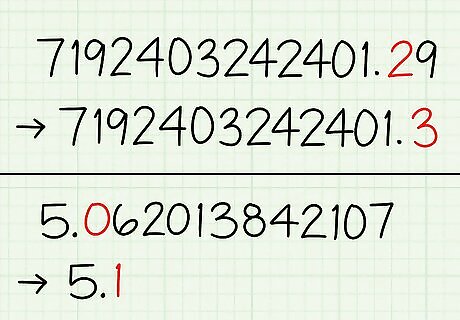
Round extra long numbers. Don't get confused by super long numbers. The rules stay the same. Find the tenths place and figure out whether to round up or down. After rounding, all the numbers to the left of the tenths place will stay the same, and all the numbers to the right of the tenths place will disappear. Here are three examples: 7192403242401.29 rounds to 7192403242401.3 5.0620138424107 rounds to 5.1 9000.30001 rounds to 9000.3
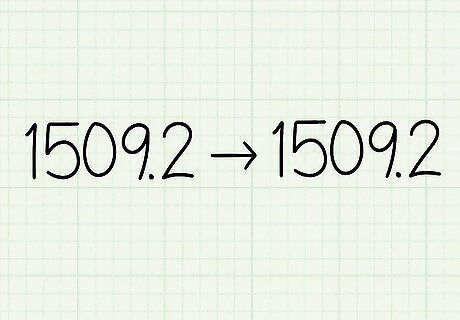
Keep numbers with no hundredths place the same. Does the number end in the tenths place, with nothing further to the right? This number is already rounded to the nearest tenth, so you don't need to do anything here. Your textbook might be trying to trick you. For example, 1509.2 is already rounded to the nearest tenth.




















Comments
0 comment